You’ve finally got the RV of your dreams, and ready to roll. But what happens when you need to take a break? Don’t worry as I’ve compiled RV parking ideas and tips to help you. There are parking cameras everywhere so make sure your vehicle is in the right spot.
4 RV Parking Ideas
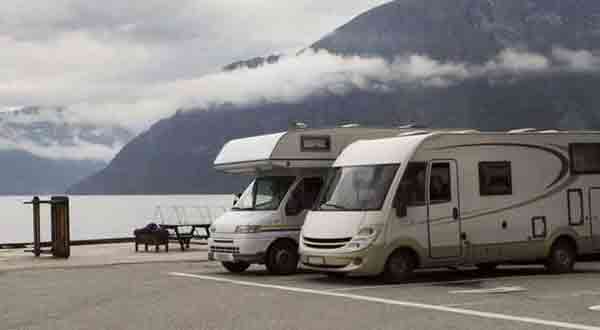
Parking an RV is simple enough, just pull over the camp site and park. However there are certain things you’ll need to look out for.
- Make sure your RV is in good condition and can make it to the campground park site in one piece.
- Campgrounds have specifications, rules and regulations. Get familiar with them so there are no misunderstandings when you’re at the site.
- Inspect the parking area. Is it big enough for your RV? Are there any potential hazards like branches, power lines or other objects that might keep you from pulling the slides out?
- Talk to the parking lot manager if you have questions.
14 Rules Of How To Park Rv?
A lot of issues and problems can be avoided if you keep the following simple rules in mind while in your RV.
1. Plan Ahead
There are book guides, maps and apps which offer information on campgrounds, parks, and other rest areas for an RV. Look these locations in the city/town you’re headed so you’ll know what to expect.
Planning involves not just figuring out the location but also how to properly drive the RV. The more you plan about the wheres, hows and whens, the smoother your trip will be.
2. Private Parking
Some RV clubs and dealers offer private parking. These require membership and payment, but you’re assured of a parking space for your RV. These locations are also well maintained and you don’t have to put up with another vehicle blocking your way or not having any slot available.
The conditions and requirements for private parking are suitable for some RVers and not for others. Think about how much you plan to use your RV and the places you’re going to visit. While it’s not free, this could be worth it depending on how much travel you do.
3. Snow Areas
It can be difficult to find parking spots when it’s snowing, and in many cases you’ll need to get permission from highway patrol to park. Bottom line is it’s not going to be easy to find a parking space, so book one as early as possible.
There is a reason why a lot of RVers winterize their vehicle, because it is difficult to use. But if you do decide to take the RV out during the winter, plan ahead so you’ll know where to park.
4. Overnight Parking
Many state areas allow overnight parking, and so does Walmart and other large retail chains. Other large establishments also allow it. The regulations vary, but the unwritten rule is not to park overnight in the same location for more than 2 consecutive nights. If you do opt for overnight parking, try not to disturb the place too much, i.e. keep the noise level down.
Overnight parking is becoming more common, but don’t abuse it. Once you’re done for the night (or two), go look for another spot so other vehicles can use the space. And while you’re staying there, patronize the establishment by buying their products. By doing so the establishment will be able to continuously provide free parking.
5. Water, Sewer and Power Issues
Sanitary pump out stations, power hook ups and tank waste management are available in RV parks, rest areas and service stations among others. Don’t empty your waste tank unless the establishment has the means to handle it. The fees, rules and regulations for power hookup and sewage storage varies too.
6. Parking
Park only in areas that have been designated for RVs. Since you’ve got a large vehicle, park at the side or the back so smaller vehicles won’t have difficulty finding parking space. Be careful when backing and going forward so you don’t hit another vehicle.
If you’re going to park to relax, don’t bring out the tables, chairs etc. Just park your RV and dine in the restaurant in the area. While you’re there, why not take a look at your supplies so you will be ready to go on.
7. Stop Right Where You Are
Don’t force the RV into the parking space if it is tight. Avoid tight spots and park only when there are no hazards in the way. If you can’t see clearly, look for another way to navigate into the parking space. If necessary get assistance from parking attendants.
8. Avoid Places That are Impossible to Get Into
If you’ve got an RV app you’ll get tips on how to avoid locations that are not suitable for an RV. But really all you need to do is avoid parking lots that don’t have secondary exits, dead end roads and tight entryways.
Park your RV along the perimeters of shopping centers, venues and stadiums. Avoid those cars that are parked in aisles as it’s difficult to get out of there.
9. Learn to Rely on Your Mirrors
Knowing how to use RV mirrors is crucial. Just like a car or any other car, you use the mirrors to gauge the distance between your RV and the other vehicles. Knowing how to use your mirrors can make a huge difference in how comfortable you’ll be while driving.
10. Set Up Temporary Parking & Driving Patterns
Look for an empty or closed parking area. Place cones all around so it’s like a camping location. Move your RV in and out of it. Keep practicing until it’s second nature so when you get to the real park you’ll know what to do.
11. Practice Blind Side Parking
The blind side refers to the passenger side. If you’re backing in, your tow won’t be lined straight with the trailer. This means at some point you won’t be able to see what’s going on as you turn your RV.
However this can be avoided if you adjust the mirrors properly. As you back into the parking space, adjust the mirrors so you can see better. Another option is to get someone to stand outside and assist in the movement of the RV.
12. Never Rely on Rear Vision Cameras
Rear vision cameras are ineffective because they’re focused on the ground and don’t provide a clear picture. Rear vision cameras also won’t be able to display branches or other overhanging objects that could get entangled with your RV.
The best option is to have someone outside assist and check the angles. Setting the windows down can also help. You can communicate with the person outside using walkie talkies.
13. Use Extreme Caution When Backing a Motorhome with a Tow Vehicle Attached
You cannot back up more than a foot with a car on a low bar more than 12 inches. The car you’re towing has a steering axle that can go anywhere. As you back, it’s going to quickly turn. The vehicle will slide sideways and cause damage.
The best way to handle this is to unhook the vehicle first. Once you’re able to move forward, you’ll be able to go forward again, reconnect the hook bar.
14. Courtesy
Some areas don’t allow RVs because they’re large and take up a lot of space. If that’s the policy, don’t force the situation and move on. Respect the rules, and there are a lot of places where you can park your RV anyway.
First 11 Ideas – Can I Park My RV Anywhere?
1. Truck Stops
Truck stops aren’t just for trucks anymore, as many now have accommodation for RVs for free. You won’t get charged for parking since these spots make their money when you buy food, gas and supplies. And these locations are easily found.
These truck stops also have restaurants and shops where you can refurbish your stock. Dump sites are also nearby for your waste tank management. Repair centers, laundry and other amenities are available near truck stops too. Your options include Flying J, Rip Griffin Travel Centers and Pilot Travel Centers.
2. Large Retail Chain Stores
Walmart and a lot of the big retail stores have parking spaces for RVs and these are among the best places to park your vehicle. Bear in mind that retail stores have different policies, and even Walmart policies vary per branch.
If you find a Walmart branch or another retail chain that allows overnight parking, take advantage of it. You’ll be right next to the store and can buy whatever you need. Just like with truck stops, learn the rules and regulations before leaving your vehicle there.
3. Restaurants
Some restaurants like Cracker Barrel are situated close to freeways where you can park. Popular fast food chains also have parking lots for RVs and other large vehicles. Aside from being near food you also get free Wi-Fi access.
4. RV Parts and Service Spots
There are a lot of RV parts and service centers all around the US so if there’s a problem you don’t have to look far for help. Aside from getting your rig fixed, they sell RV parts and accessories too. You can join these services and avail of discounts, parking and other benefits.
Not all service spots have free parking, but it’s good to bring your RV here for a checkup especially if you’re headed for a long trip to the boondocks. You’ll also want to have your RV inspected after a long trip.
5. Casinos
If you happen to be in Vegas, don’t be surprised if most of the casinos have parking spaces for RVs today. And that’s not surprising given the fact that RVs have become more popular and commonplace. Just check the policies of the casinos first to find out how long they accommodate RVs.
6. Small Towns
Contrary to what some may believe, small towns in the US do have parking spaces for RVs. Many of their parks have amenities for an RV overnight stay. Being a small town it’s not too far off the cinema or restaurant so that’s another benefit.
Small town policies on RV parking varies, so don’t assume the rules in one town is applicable to the other. It really doesn’t take a lot of time to clarify the rules anyway. Let the establishment owner know you plan to stay there overnight. Just be polite and everything should be fine.
7. Campgrounds and Parks
For a lot of RVers, a state park, national park or campground are the first things that come to mind. There is plenty of space here, and the facilities are complete with waste tank management and other accommodations.
It is possible to make reservations at campgrounds, and it’s a good idea to do so. These places can get crowded during the summer so make sure you’ve got a spot already. Many parks also have an annual pass. If you avail of this you’ll get discounts on various amenities and waive a lot of the fees.
8. Stay at Golf Courses
If you join RV Golf Club you’ll get free overnight parking. Only members are allowed to park so no need to worry about not having a spot for your RV the next time you drop by.
9. City Convention Centers or Stadiums
A lot of stadiums and convention centers allow you to park if there’s no occasion. However this isn’t always the case so you’ll need to go over the regulations to determine if overnight parking is allowed or not.
10. Rest Areas
The nice thing about rest areas is they have facilities where you can empty your waste tanks. Many also have freshwater tanks though the quality varies from site to site. But if you’re looking to take off some load then rest areas will do just fine.
11. Elks Club and Moose Lodge
If you sign up you’ll be eligible for free parking. These places are known for being clean and well maintained so that’s another advantage. In addition you can also park at shopping centers, malls and large venues.
It’s usually okay to park around those places, but it is better to be safe. Take the time to ask the local authorities and get their permission to ask questions.
10 Tips for Overnight RV Parking
Now that you know the many places you can park, here are some tips to consider. These will make your stay in the parking area more enjoyable.
1. Use the Store or Restaurant
Free parking is possible because those businesses try to make money via the restaurants or stores. That’s why you should throw your support behind them. By helping their establishments you’ll encourage them to support RVers.
2. Don’t Stay Multiple Nights in a Row
Mos RVers don’t usually stay more than a night at the same spot, and that should be the case for you. At most stay two consecutive nights, but if you want to stay in town a bit longer, look for another parking space.
3. Park in the Back or Side of the Lot
Your goal is to be unobtrusive as possible. Do not park your vehicle where it will get in the way of cars and other small vehicles. Do not park your RV near the front door and the close-in spaces should be for customers.
Another reason to park at the side or the back is it doesn’t get as crowded as the front. So when the time comes you decide to leave you don’t have to worry about another vehicle blocking your path.
4. Take Up as Little Space as You Can
This might be a bit tough given the size of your RV, but there are ways such as keeping the slides in. This is definitely what you should do if there are many RVs in the area or you can’t find an exterior spot hanging. No matter what, don’t park your RV along roadways as it might damage your ride.
Another way to cut down on space usage is not to pull the awnings out. You’re parking to get rest so there’s really no need for it.
You can also save space by not setting up the tailgate. Again you’re here to relax and get some sleep so there’s no point in setting up the grill, chairs, rugs, carpets or tables. As mentioned earlier it’s also better to use the restaurants that offer parking.
5. Arrive Late, Leave Early
You’ve got a big rig that takes up a lot of space, so be considerate and don’t park during busy hours. As much as possible don’t park during peak eating and shopping times. Since you’re going there to rest, avoid the peak hours so you can rest too.
6. Don’t Raise a Ruckus
You’ll be more welcome at RV parking lots if you stay quiet. If you followed the tips above you’ll park during non-peak hours, but that’s still not an excuse to make noise. Keep the music low and if you’re entertaining friends don’t make too much noise.
7. Keep Clean
Leave the place as you found it. Don’t leave your thrash in the place and dispose your waste in the appropriate manner. Don’t clutter the place and when you go don’t leave any trace of garbage.
8. Waste Tanks
Dispose waste tanks only if the establishment has the facility to deal with it. Don’t just dump your waste anywhere as that has an adverse effect on the environment. Do not empty your waste tank in drains as it is against the law.
9. Traveling with Pets
If you’ve got pets, clean up after them. Don’t allow them to litter the park and keep dogs occupied so they don’t bark too much in the middle of the night.
10. Talk to the Site Manager
If you’re not sure of the rules regarding pets, waste disposal etc talk to the establishment manager. It won’t hurt to ask and it’s best to clear things up as soon as possible. While you’re talking, inquire about the rules on spaces between RVs and other vehicles.
How to Level an RV?
Note: if your motorhome has an auto-level mechanism these steps won’t be necessary.
- Set your RV where you want to park it.
- Designate the areas that has to be leveled. Just put some lines near the front or the back of the tires.
- Pull the RV forward or back so it clears the marks you set.
- Put the boards or blocks in place.
- Drive your RV over the blocks. Avoid climbing more than a couple of inches at a time.
- Keep moving up your RV, making sure the tires don’t veer over the edge.
- Look at the bubble level and make adjustments to the blocks/boards if needed.
- If your RV is side to side level, put wheel chocks at the back or the rear or the front of the tires.
- Set your RV to “park”.
How to Stabilize Your RV?
After leveling your RV you’ve got to make sure that it’s level. Use jacks only after your RV has been stabilized.
- Lower the jacks as directed in the owner’s manual.
- Put a couple of 2×4 boards under each foot for greater stability.
- Check if the jack foot is touching the ground. If it is, turn the crank for greater security.
Learning how to park RV is a must, and so is knowing where and when to park. Taking the time to learn these will save you a lot of potential trouble.
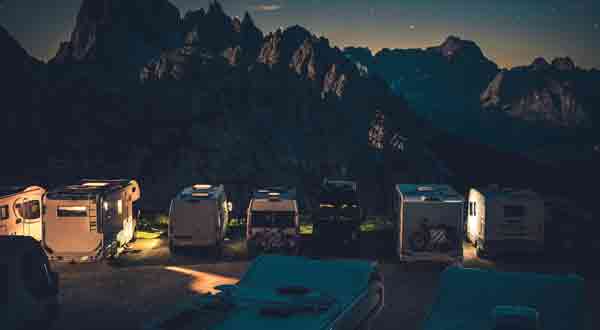
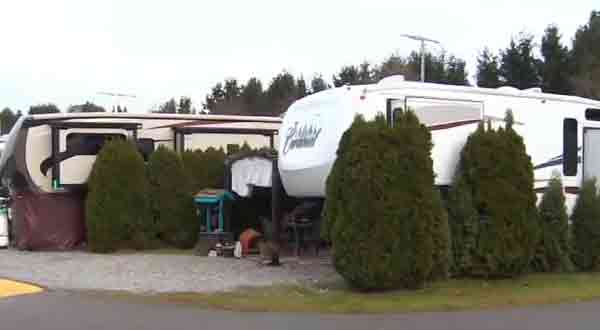
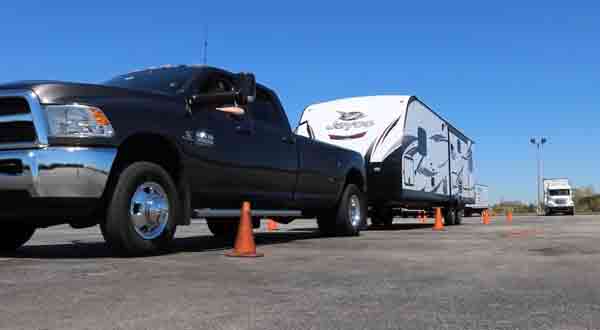
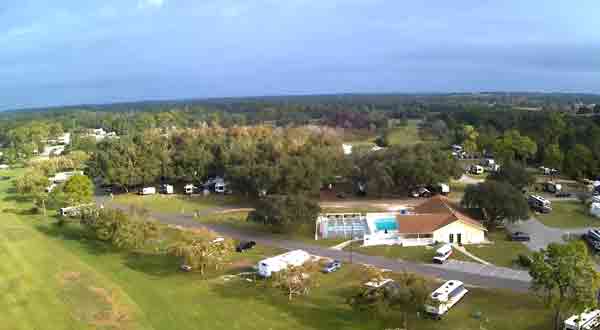
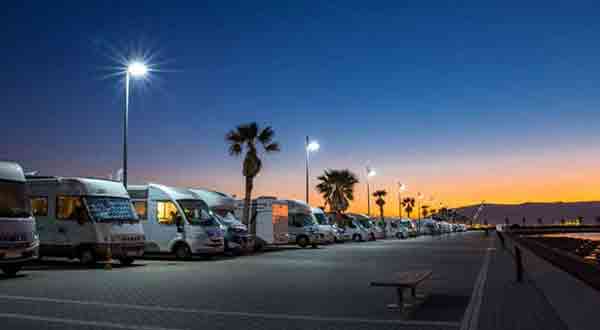
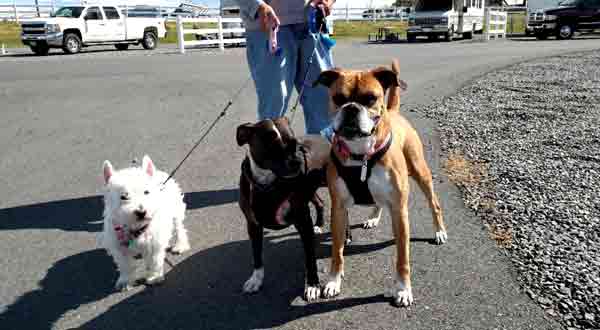
Leave a Reply